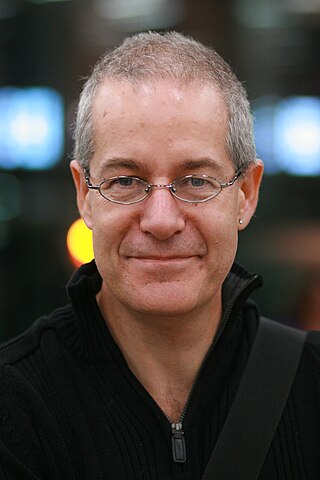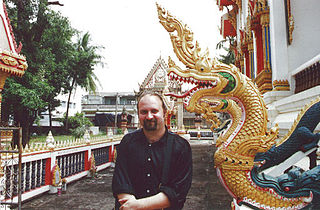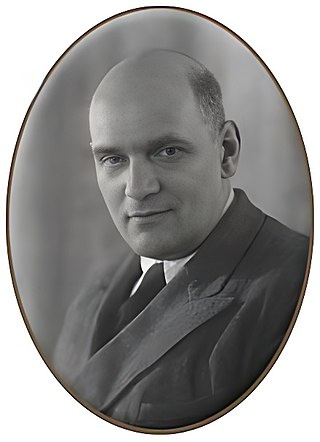Related Research Articles

Bigfoot, also commonly referred to as Sasquatch, is a purported ape-like creature said to inhabit the forests of North America. Many dubious articles have been offered in attempts to prove the existence of Bigfoot, including anecdotal claims of sightings as well as alleged video and audio recordings, photographs, and casts of large footprints. Some of which are known or admitted hoaxes.
Cryptozoology is a pseudoscience and subculture that searches for and studies unknown, legendary, or extinct animals whose present existence is disputed or unsubstantiated, particularly those popular in folklore, such as Bigfoot, the Loch Ness Monster, Yeti, the chupacabra, the Jersey Devil, or the Mokele-mbembe. Cryptozoologists refer to these entities as cryptids, a term coined by the subculture. Because it does not follow the scientific method, cryptozoology is considered a pseudoscience by mainstream science: it is neither a branch of zoology nor of folklore studies. It was originally founded in the 1950s by zoologists Bernard Heuvelmans and Ivan T. Sanderson.

In South Jersey and Philadelphia folklore in the United States, the Jersey Devil is a legendary creature said to inhabit the forest of Pine Barrens in South Jersey. The creature is often described as a flying biped with hooves, but there are many variations. The common description is that of a bipedal kangaroo-like or wyvern-like creature with a horse- or goat-like head, leathery bat-like wings, horns, small arms with clawed hands, legs with cloven hooves, and a forked tail. It has been reported to move quickly and is often described as emitting a high-pitched "blood-curdling scream".
Grover Sanders Krantz was an American anthropologist and cryptozoologist; he was one of few scientists not only to research Bigfoot, but also to express his belief in the animal's existence. Throughout his professional career, Krantz authored more than 60 academic articles and 10 books on human evolution, and conducted field research in Europe, China, and Java. He was a member of Mensa and Intertel, high-IQ societies.
Loren Coleman is an American cryptozoologist who has written over 40 books on a number of topics, including the pseudoscience and subculture of cryptozoology.
The Minnesota Iceman is a sideshow exhibit and elaborate hoax that depicts a fake man-like creature frozen in a block of ice. It was displayed at shopping malls, state fairs, and carnivals in the United States and Canada in the 1960s and early 1970s and promoted as the "missing link" between man and Neanderthals. It was sold on eBay in 2013 and put on display in Austin, Texas.

Ivan Terence Sanderson was a British biologist and writer born in Edinburgh, Scotland, who became a naturalized citizen of the United States. Along with Belgian-French biologist Bernard Heuvelmans, Sanderson was a founding figure of cryptozoology, a pseudoscience and subculture. Sanderson authored material on paranormal subjects and wrote fiction under the pen name Terence Roberts.

Massimo Pigliucci is Professor of Philosophy at the City College of New York, former co-host of the Rationally Speaking Podcast, and former editor in chief for the online magazine Scientia Salon. He is a critic of pseudoscience and creationism, and an advocate for secularism and science education.

Bossburg is a ghost town in Stevens County, Washington, and is located on the east bank of the Columbia River just south of the Canada–US border. Bossburg had a maximum population of 800 in 1892. The town was once named "Young America," although in 1896 it was renamed in honor of the town's first citizen, C. S. Boss. It is currently best known for the 1969 discovery of the footprints in the snow of a supposed Sasquatch known as "Cripplefoot," and subsequent hi-jinks.
Raymond L. Wallace was an American amateur Bigfoot hoaxer.

Richard Freeman is a cryptozoologist, author, zoological journalist, and WebTV Presenter. He is also the zoological director of the Centre for Fortean Zoology (CFZ), and co-edits both the journal, Animals & Men and several editions of the annual CFZ Yearbook. Freeman has written, co-written, or edited a number of books, and has contributed widely to both Fortean and zoological magazines, as well as other newspapers and periodicals, including Fortean Times and Paranormal Magazine.
A fringe theory is an idea or a viewpoint which differs from the accepted scholarship of the time within its field. Fringe theories include the models and proposals of fringe science, as well as similar ideas in other areas of scholarship, such as the humanities. In a narrower sense, the term fringe theory is commonly used as a pejorative; it is roughly synonymous with the term pseudo-scholarship. Precise definitions that make distinctions between widely held viewpoints, fringe theories, and pseudo-scholarship are difficult to construct because of the demarcation problem. Issues of false balance or false equivalence can occur when fringe theories are presented as being equal to widely accepted theories.

MonsterQuest is an American television series that originally aired from October 31, 2007 to March 24, 2010 on the History channel. Produced by Whitewolf Entertainment, the program deals with the search for various monsters of interest to the cryptozoology subculture and paranormal entities reportedly witnessed around the world. A spin-off show, MysteryQuest, which focuses on unsolved mysteries, premiered on September 16, 2009.

Boris Fyodorovich Porshnev was a Soviet historian known for his works on popular revolts in Ancien Régime France and a doctor of social sciences working on psychology, prehistory, and neurolinguistics as relating to the origins of man.
The Meister Print refers to two trilobites in slate that appeared to be crushed in a human shoe print. The print was cited by creationists and other pseudoscience advocates as an out-of-place artifact, but was debunked by palaeontologists as the result of a natural geologic process known as spall formation.

Wild Thing is a podcast about the relationship between science and society. It is hosted by Laura Krantz and produced by Foxtopus Ink. In 2006 Krantz learned that she was related to anthropologist Grover Krantz, who had spent much of his career writing about and hunting for Sasquatch, after she read an article in the Washington Post. At the time, Krantz was working at National Public Radio and thought that she needed to dig deeper. Through her reporting she came to understand that the search for Sasquatch spoke to important questions about human evolution, conspiracy theories, and the human connection to the natural world. The second season of Wild Thing concerns the search for extraterrestrial life. The third season explores the future of nuclear power.

Vladimir Markotic was a Croatian-American anthropologist, archaeologist and cryptozoologist.
Laura Krantz is an American journalist, podcaster and author. She is the host of the podcast Wild Thing, was an editor at National Public Radio for ten years, has a series of illustrated children's books based on the podcast, and is a founding partner of the media company Foxtopus Ink. Her work has been covered extensively in the media including in the Los Angeles Times, FOX, The Atlantic, and The Washington Post. She graduated Whitman College in 2000.
References
- ↑ "Brian Regal". The Guardian . Archived from the original on 25 July 2021. Retrieved 25 July 2021.
- ↑ "History of the Jersey Devil". MonsterTalk . Archived from the original on 25 July 2021. Retrieved 25 July 2021.
- ↑ Normandin, Sebastian. (2012). Searching for Sasquatch: Crackpots, Eggheads, and Cryptozoology by Brian Regal. The British Journal for the History of Science . Vol. 45, No. 4, Special Issue: British Nuclear Culture. pp. 699-700.
- ↑ Ritvo, Harriet. (2015). Brian Regal. Searching for Sasquatch: Crackpots, Eggheads, and Cryptozoology. The American Historical Review 120 (2): 586-587.
- ↑ Zautyk, Karen (1 May 2013). "The Devil's in the details". The Observer . Archived from the original on 5 May 2016. Retrieved 25 July 2021.
- 1 2 Celestia Ward, Pascual Romero, Benjamin Radford (23 July 2021). "Episode 153 - Brian Regal Talks Pseudoscience and Pseudohistory". Squaring the Strange (Podcast). Two Heads Studio. 28:25 minutes in. Retrieved 25 July 2021.
{{cite podcast}}: CS1 maint: multiple names: authors list (link) - ↑ Regal, Brian (23 January 2021). "How I learned how to survive the end of the world". NJ.com . Archived from the original on 25 January 2021. Retrieved 25 July 2021.
- 1 2 "Brian Regal, Ph.D." Kean University. Archived from the original on 18 January 2021. Retrieved 25 July 2021.
- ↑ Regal, Brian. "Brian Regal, PhD". Kean Google site. Archived from the original on 31 October 2020. Retrieved 25 July 2021.
- 1 2 Ashton Macaulay (30 October 2019). "Writing the Book on the Jersey Devil - Dr. Brian Regal Interview". Cryptids Decrypted (Podcast). Retrieved 25 July 2021.
- ↑ "Editorial Board". Endeavour. Archived from the original on 26 July 2020. Retrieved 26 July 2021.
- ↑ Regal, Brian (2022). The Battle over America's Origin Story. SpringerLink. Springer Nature Switzerland AG. doi:10.1007/978-3-030-99538-6. ISBN 978-3-030-99537-9. S2CID 248613011 . Retrieved 28 August 2022.
- ↑ "New and Notable". Skeptical Inquirer . Committee for Skeptical Inquirer. 42 (4): 61. 2018.